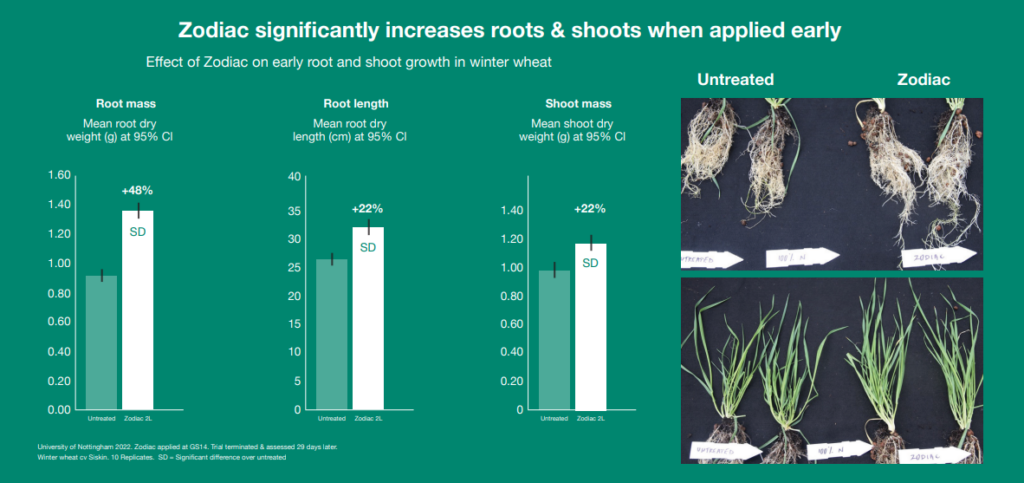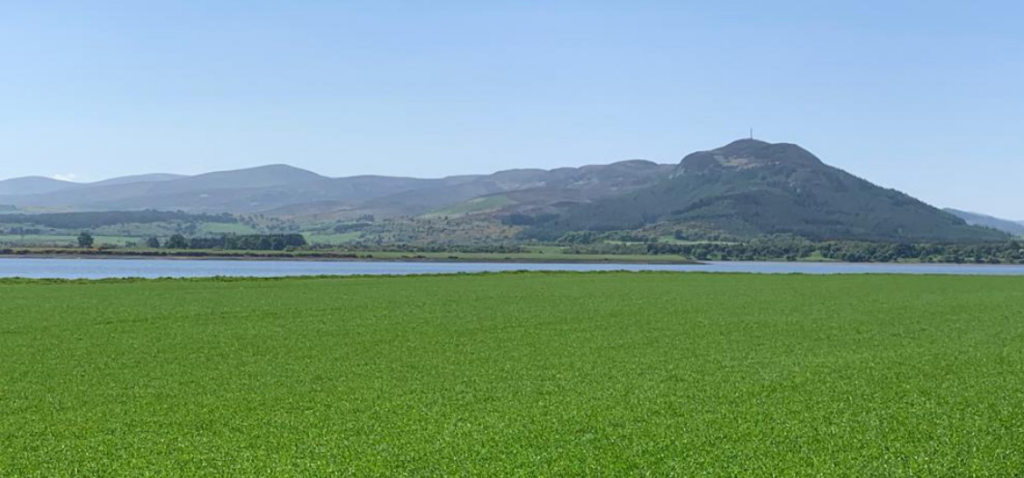With high stress periods now commonplace during the growing season, including a biostimulant within the programme can act as an insurance policy for growers looking to protect yield and quality.
This is according to Alistair Gordon, Scotland-based agronomist at ProCam, who says that an increasing number of growers are now looking at all options when it comes to improving growth and protecting crops against stress. “I really enjoy working with farmers to discuss what they want out of their systems,” says Alistair.

“Our main cropping in the area is spring barley, and grass is very important here, too. We also have some crops of winter wheat, barley and oilseed rape — as well as a lot of seed potatoes. “With spring barley mainly going for malting, growers here are looking for a quality product – they’re not just trying to fill a shed.”
Technically, this means growers are trying to hit a nitrogen specification of 1.4-1.6% nitrogen, so there is often a lot pegged on and invested in crop performance, he adds. As such, over recent years Alistair says he has turned to biostimulants in a bid to help protect this potential.
“I am definitely using more and more biostimulants, particularly Zodiac from Interagro. “If we take spring barley for example, I’m particularly using it in this crop because quite often we get a dry spell in the summer. At this point, the barley is growing that fast that if it hasn’t received a biostimulant, the crop becomes very stressed.
“Last year in May and June, we had a particularly dry period, and there was a visible difference between those crops which had and those which hadn’t been treated with Zodiac.”
Seaweed benefits
New from the Interagro stable, Zodiac is a natural growth stimulant combining the unique biological stress defence and elicitor properties of polysaccharides in Ascophyllum nodosum – a strain of cold water seaweed — with biochemical stress busting and biostimulation properties of amino acids and peptides in vegetal protein hydrolysates, explains Stuart Sutherland, technical manager at Interagro. “When used correctly, seaweed can be an incredibly beneficial inclusion in biostimulants.
Cold water seaweed specifically is a natural source of essential nutrients such as nitrogen, phosphorus, potassium, and trace elements. These nutrients are vital for plant growth and development. “It also contains bioactive compounds like cytokinins, auxins, and gibberellins that can stimulate plant growth, improve flowering and fruiting, and enhance overall plant health.
What’s more, the compounds found in cold water seaweed help plants withstand environmental stressors such as drought, salinity, and disease. This can improve crop resilience and productivity.”

Tried and tested
Alistair first saw Zodiac in ProCam trials three years ago. ProCam has carried out a number of laboratory trials comparing Zodiac and other similar biostimulant type products, with Alistair sending down some of his local soils to build an accurate picture of just if, and how, certain products could be useful in his area.
“The lab took our medium and planted spring barley plants in it, before spraying them with Zodiac and other similar treatments. However, Zodiac was selected as the one which improved tillering and root mass the most.” Delving into this trial further, the work was carried out by Dr Steve Rossall of Nottingham University, who also proved this benefit again in further work in 2022, explains Stuart.
“Zodiac was applied to winter wheat at GS14, at a rate of 2 l/ha, and compared with untreated crops. After 29 days, both plants were measured for root and shoot mass, as well as root length. “The study showed a 48% increase in root mass where Zodiac was used, as well as a 22% increase in root length and 17% greater shoot mass.
The effect of this is better nutrient uptake and growth for optimum production.” Stuart says that this includes better nitrogen uptake, and nitrogen use efficiency. Of course, better growth often translates into better yields too, and over recent years – in numerous trials — Zodiac has proven to increase yield in a variety of crops, including wheat, potatoes, swede and fodder beet, he adds.

Outstanding in its field
Despite its impressive performance in trials, what really sold him on the product was Zodiac’s performance in the field, says Alistair. “Trials are great, but nothing beats seeing a product in the field. After good results in the lab, we found a spring barley seed grower who didn’t have quite enough seed to sow a field, so we thought this would be a good opportunity to stretch seed rates and see what impact Zodiac might have.”
The variety in question, Laureate, tends to average three to four tillers per plant, explains Alistair. “Lower seed rates tend to increase tiller counts, but spring barley is often unable to compensate. The side of the field with the normal nutritional program of manganese, copper and zinc averaged four tillers per plant, but when Zodiac was added it increased to seven tillers. This is unheard of in spring barley.
“This highlighted just how useful Zodiac could be during times where certain stressors, like the weather or pests, could lead to gappy crops.” Grower tramline trials further north in Aberdeenshire on swede and fodder beet have also shown benefits with early applications of Zodiac, continues Stuart.”
In the swede, variety Lomond, test digs showed two applications of Zodiac at 1.5 l/ha gave a yield benefit of 40% over the untreated. In the fodder beet, variety Geronimo, the Zodiac treated crops had 10% more top weight and 19% more root weight, to the farmers delight.”
Optimising usage
In terms of optimising usage, Alistair says early application is key. “Previously, I’d used another seaweed product in the middle of a drought, when crops were already stressed, and didn’t really see a result. “The reason for this is because at this point, there’s no actual growth to stimulate, so the biostimulant will fail.
Therefore, it’s vital to get it on before a perceived stress period as a sort of insurance policy.” Alistair also believes the improved plant health and growth could enable crops to fend off disease better. “When chlorothalonil got revoked, it became obvious that we were struggling with current chemistry.
So my thoughts are that using something like Zodiac will help reduce stress in the plant, making it more likely to be able to fend off disease in an era of declining chemistry. “Ramularia in particular is a key disease of concern in spring barley, which is often brought on by stress. My thinking is that if we can reduce the amount of stress in the plant, we may be able to reduce the severity of any ramularia that does appear.”

The season ahead
Looking to the season ahead, while he usually advocates a proactive approach, Alistair says he’ll also be attempting to rescue some of the crops that have come out of winter looking a little worse for wear. “I don’t usually put Zodiac on winter wheat, but this year I will be trying it on some of the more backwards crops, along with some manganese, to try and improve the tillering.
“An increasing number of growers are now making use of Zodiac. As an agronomist, you have to believe in products yourself first, so it does take a few years to work everything out. But with the results we’re seeing at the moment, products like Zodiac are bound to gain more traction.”


